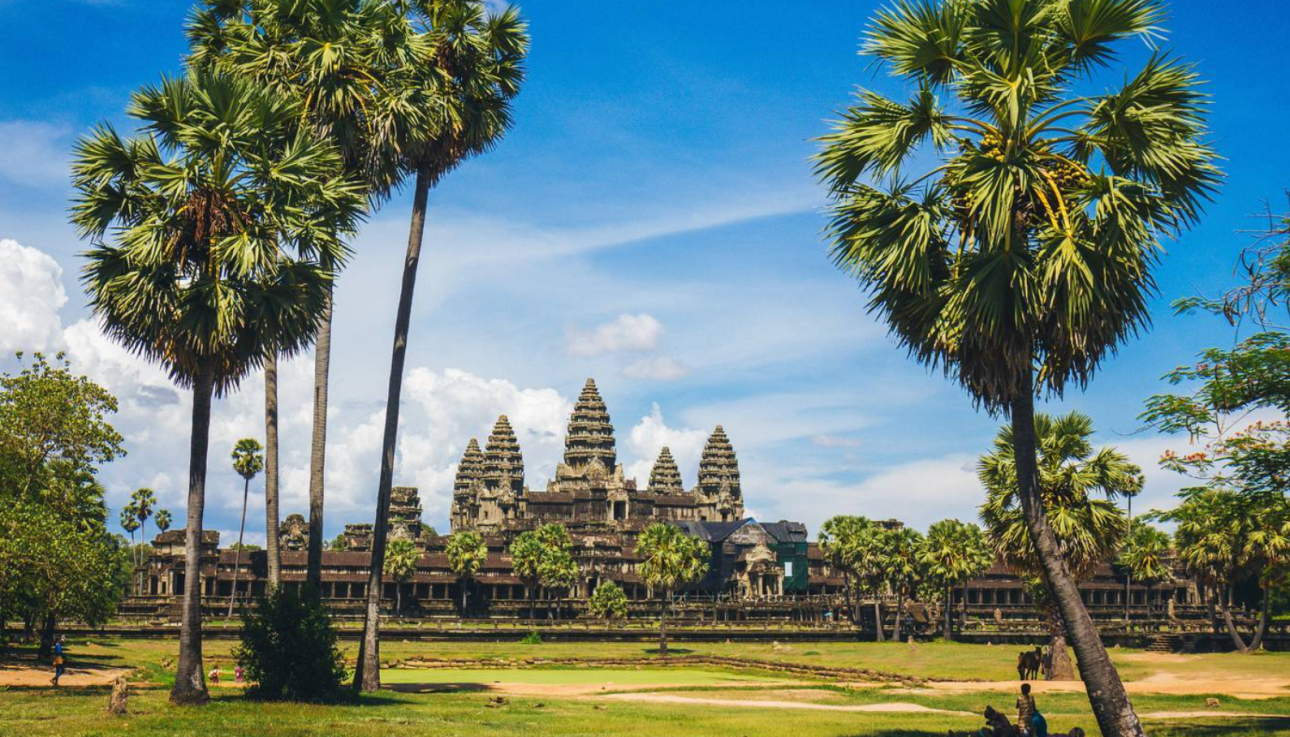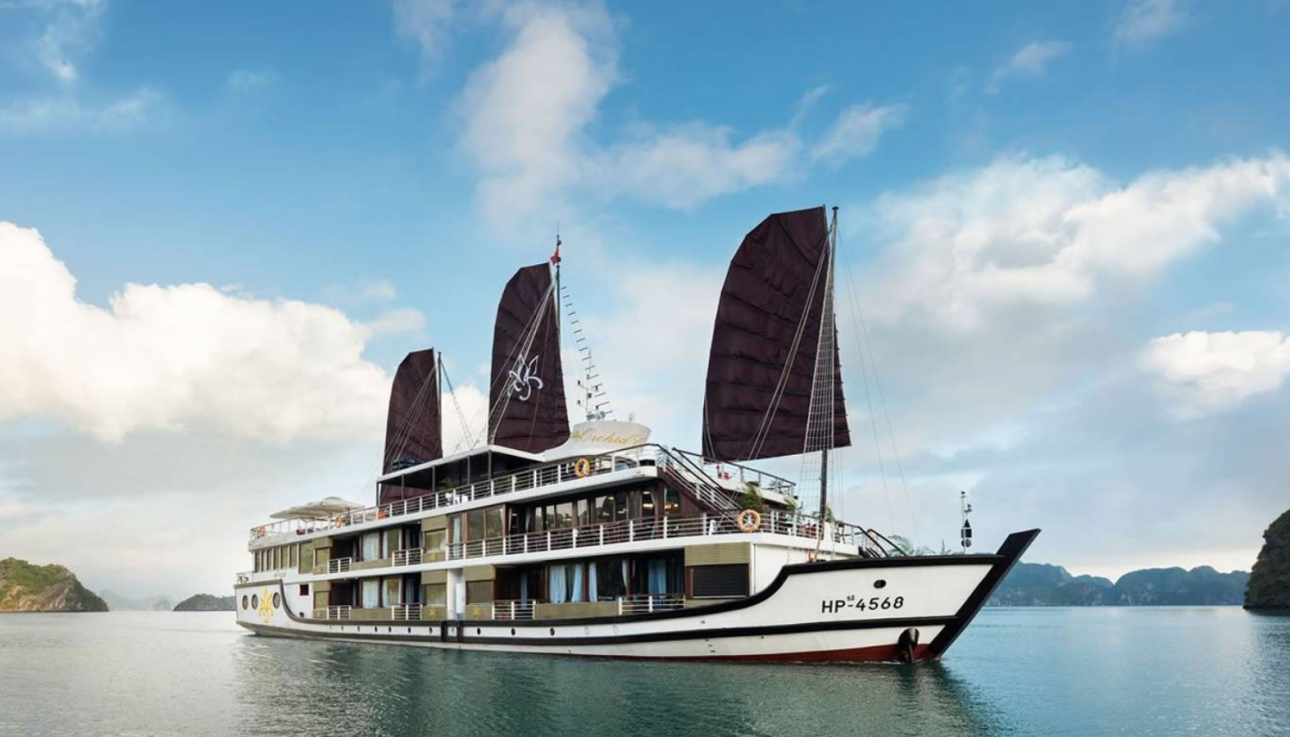
Search Results for: Cambodia
We found 7 results for Cambodia. You can search again if you are unsatisfied.





Cambodia Travel
The Location:
Cambodia is located in Southeast Asia and shares borders with the Gulf of Thailand, Vietnam, Laos and Thailand. From Dubai, a non-stop flight is 8h 30m, and from Sydney, it is roughly 11h 30m, with a stopover.
Capital City:
Phnom Penh is the vibrant bustling capital of Cambodia and is also the most populous city in the country.
Main Airport:
Phnom Penh International Airport is the largest airport in Cambodia containing a land area of 400 hectares. It is located 10 kilometres from the city of Phnom Penh. CODE: PNH; CLOSEST CITY: PHNOM PENH.
Language Spoken:
The official language of Cambodia is Khmer, and English is also widely spoken, particularly in tourist hot spots.
Currency:
Cambodia uses the Cambodian Riel. The currency code is KHR. ATMs are widely available and credit cards are accepted by many hotels and restaurants across Cambodia.
Visas:
Most visitors to Cambodia will be granted a one-month visa on arrival for a small fee of USD $30 and you will need to have a passport sized photo on hand. We recommend checking your country’s travel advisories in advance of booking a trip.
Electricity:
Electrical current is 230V/50hz using three associated plug types, A, C and G. The standard voltage in the US is 110 volts, so you may need a surge adaptor.
Vaccinations:
Typhoid, Hepatitis A and B are advised however there are no compulsory vaccinations. Consult your doctor 6 to 8 weeks before you depart.
Emergency Calls:
The phone numbers to call in case of emergency when in Cambodia are 117 for the police, 119 for an ambulance and 118 for a fire.
When to Visit
Peak Season
NOVEMBER TO FEBRUARY
The high season in Cambodia, from November through February welcome visitors with the appeal of very hot weather (with average highs of 30°C in some parts) however, this is when Cambodia experiences a sharp influx of visitors – especially in Siem Reap and across the main tourist attractions. This is also the time when travellers from the Southern Hemisphere make the most of Christmas holidays or extended school holidays and university breaks, so many backpackers can be found during this time. For this reason, it is suggested that you book in advance as prices will rise, and both Chinese and Vietnamese New Year will fall during this time.
Low Season
MAY TO SEPTEMBER
Through the months of May to September, Cambodia is characterized by heavy rain (monsoon season) and a drop in temperature. This may have a small impact on the outdoor activities you wish to partake in, however, if you are travelling on a budget means this is a great time to travel as prices will be lower. The average temperature will still be warm (averaging 22°C in some parts), however, the sunlight will be overshadowed by huge rain clouds. Important festivals include the Royal Ploughing Ceremony and are held to mark the traditional beginning of the rice-growing season along with the Festival of the Dead celebrated in September.

Vietnam Travel
The Location
Vietnam is a country in Asia and borders the Gulf of Thailand, the Pacific Sea, Gulf of Tonkin, and sits along Cambodia, China and Laos. From Dubai, a non-stop flight is 7h 15m, and from Australia, it is roughly 8 hours direct.
Capital City
Hanoi is the capital of Vietnam and has been since the reunification of North and South Vietnam in 1976.
Main Airport
Tan Son Nhat International Airport, located in Ho Chi Minh City is the largest airport in Vietnam and is the international and domestic hub for travellers. It is just 6 kilometres from the city centre.
Language Spoken
The official language of Vietnam is Vietnamese. English is spoken across the country and you should have no issue with basic communication or greetings.
Currency
Vietnam uses the Vietnamese Dong. The currency code is VND. Be careful when withdrawing cash as the smallest note is VND 10,000. It is safe to withdraw money from banks or ATMs while you’re there – just check how much you’re really withdrawing.
Visas
Most travellers will need to apply for a visa before travelling, or can also obtain one on arrival for a small fee. Some nationalities can apply for an E-Visa, but make sure you keep up to date with entry requirements as these can change.
Electricity
The electrical current in Vietnam is 220V/50hz using plug types A, C and F. The standard voltage in the US is 110 volts, so you may need a surge adaptor.
Vaccinations
Typhoid, Hepatitis A and B and antimalarial tablets are advised, but not compulsory. You will, however, need a Yellow Fever certificate if travelling from a high-risk area. Consult your doctor 6 to 8 weeks before you depart.
Emergency Calls
The phone numbers to call in case of emergency are 113 for the police, 115 for an ambulance and 114 for a fire.
When to Visit
Peak Season
JUNE TO AUGUST
While Vietnam is a small country, the temperatures vary greatly between the north and south regions. But, despite the varying seasons, Vietnam is a year-round destination and you just need to make sure you pick the right time to suit your travel needs. June through August is when Vietnam is at its hottest and for travellers who prefer to avoid extreme heat, it would be best to travel at another time. For sun lovers, this is your time to shine – but be aware that it will rain heavily in the south but the north should be clear from the rain. If you’re on a budget, avoid August as school holidays will cause accommodation prices to rise.
Low Season
NOVEMBER TO JANUARY
In the northern part of Vietnam, travellers will face the possibility of snow accompanied by cool temperatures. On the other hand, if you travel in the south, the dry season tends to last from December to late April and the climate will be warm (minimum 20°C on average) so it really does depend on where you want to explore most. If the weather patterns of Vietnam have only left you confused, the best time to explore the country overall would be during spring (March and April) or autumn (September or December) for the most favourable climate.

Laos Travel
<!– wp:paragraph –>
<p><strong>The Location</strong> </p>
<!– /wp:paragraph –>
<!– wp:paragraph –>
<p>Laos is a country in Southeast Asia and shares borders with China, Myanmar, Thailand, Vietnam, Cambodia. From Sydney, a non-stop flight is 11 hours, and from Dubai, it is roughly 10 hours. </p>
<!– /wp:paragraph –>
<!– wp:paragraph –>
<p><strong>Capital City</strong></p>
<!– /wp:paragraph –>
<!– wp:paragraph –>
<p>The capital and largest city is Vientiane and sits near the border of Thailand along the Mekong River. Other major cities include Luang Prabang, Savannakhet and Pakse. </p>
<!– /wp:paragraph –>
<!– wp:paragraph –>
<p><strong>Main Airport</strong></p>
<!– /wp:paragraph –>
<!– wp:paragraph –>
<p>Wattay International Airport is the main hub for international and domestic travel. It is located 3 km outside of the city centre of its capital, Vientiane. CODE: VTE; CLOSEST CITY: VIENTIANE.</p>
<!– /wp:paragraph –>
<!– wp:paragraph –>
<p><strong>Language Spoken</strong></p>
<!– /wp:paragraph –>
<!– wp:paragraph –>
<p>The official language of Laos is Lao, however, English is commonly spoken across the country. In areas that are further away from major cities, fluent speakers may be harder to come by. </p>
<!– /wp:paragraph –>
<!– wp:paragraph –>
<p><strong>Currency</strong> </p>
<!– /wp:paragraph –>
<!– wp:paragraph –>
<p>Laos uses the Laos Kip. The currency code is LAK. It is safe to withdraw money from banks or ATMs while you’re there, however, the withdrawal limit is quite low (under $100 USD). </p>
<!– /wp:paragraph –>
<!– wp:paragraph –>
<p><strong>Visas</strong></p>
<!– /wp:paragraph –>
<!– wp:paragraph –>
<p>30-day visas can be obtained on arrival at most entry points into Laos. Visa information can change often and varies from country to country. We recommend checking your country’s travel advisories in advance of booking a trip.</p>
<!– /wp:paragraph –>
<!– wp:paragraph –>
<p><strong>Electricity</strong></p>
<!– /wp:paragraph –>
<!– wp:paragraph –>
<p>Electrical current is s 230 V and the frequency is 50 Hz. In Laos the power sockets are of type A, B, C, E and F. The standard voltage in the US is 110 volts, so you may need a surge adaptor. </p>
<!– /wp:paragraph –>
<!– wp:paragraph –>
<p><strong>Vaccinations</strong></p>
<!– /wp:paragraph –>
<!– wp:paragraph –>
<p>The usual vaccinations of Typhoid, Hepatitis A and B are advised and you may need to prove you have had a yellow fever vaccination if travelling through infected areas. Consult your doctor 6 to 8 weeks before you depart.</p>
<!– /wp:paragraph –>
<!– wp:paragraph –>
<p><strong>Emergency Calls</strong></p>
<!– /wp:paragraph –>
<!– wp:paragraph –>
<p>The phone numbers to call in case of emergency are 191 for the police, 195 for an ambulance and 190 for a fire.</p>
<!– /wp:paragraph –>
<!– wp:heading {“textAlign”:”center”} –>
<h2 class=”wp-block-heading has-text-align-center”>When to Visit</h2>
<!– /wp:heading –>
<!– wp:columns –>
<div class=”wp-block-columns”><!– wp:column –>
<div class=”wp-block-column”><!– wp:paragraph {“align”:”center”} –>
<p class=”has-text-align-center”><strong>Peak Season</strong></p>
<!– /wp:paragraph –>
<!– wp:paragraph {“align”:”center”} –>
<p class=”has-text-align-center”>JUNE TO AUGUST</p>
<!– /wp:paragraph –>
<!– wp:paragraph –>
<p>Laos position means the temperature throughout the year is relatively enjoyable, however, the reason that travellers flock to Laos is mostly due to the pleasant temperature. Also, the higher the altitude, the lower the temperatures will so make sure you pack accordingly. Christmas and New Year’s Eve in December always sees a rise in visitors, so it is best to book well in advance. Notable festivals that you might want to consider include Chinese and Vietnamese New Year celebrations in Vientiane, Pakse and Savannakhet where you will encounter vibrant street parties and of course – fireworks aplenty.</p>
<!– /wp:paragraph –></div>
<!– /wp:column –>
<!– wp:column –>
<div class=”wp-block-column”><!– wp:paragraph {“align”:”center”} –>
<p class=”has-text-align-center”><strong>Low Season</strong></p>
<!– /wp:paragraph –>
<!– wp:paragraph {“align”:”center”} –>
<p class=”has-text-align-center”>APRIL TO AUGUST</p>
<!– /wp:paragraph –>
<!– wp:paragraph –>
<p>Over the months of April to July is when temperatures start to rise, and travellers may find themselves sweltering in the 40°C average temperatures. But, if you’re not afraid of the warm weather, you can feel free to explore Laos during this time. Yes, this is the rainy season and your adventures will mostly be unbothered by rainfall, yet visitors must be aware that rainfall may cause some roads or unpaved areas to require itineraries to be rerouted. While the months of April to August are known as the low season, travellers should be aware that August is when most Europeans take their vacation along with many university students. Best to book ahead to avoid higher prices. </p>
<!– /wp:paragraph –></div>
<!– /wp:column –></div>
<!– /wp:columns –>
